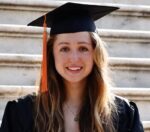Integrating Engineering Philosophy into Medical Education will Empower Future Physicians
Traditional medical school curriculum consists of two years spent learning basic science followed by two years learning to apply such knowledge in the clinical realm. Though effective at delivering a massive volume of information in a short time, this model often struggles to engender critical thinking and problem-solving skills in preclinical medical students. This results in a difficult transition to clinical thinking in the third year, as evidenced by feedback from third-year medical students and their clerkship directors.
By comparison, engineering education is built on repeated exposure to problems with increasingly complex solutions. Students are first taught basic physics under ideal conditions and then gradually introduced to real-world problems with unknown solutions.
A new article by researchers from Boston University Chobanian & Avedisian School of Medicine discusses how engineering education could be applied to medical education to improve medical student’s critical thinking and problem-solving ability.
 “Incorporating open-response questions with partial credit grading into their pre-clerkship curriculum (the first two years of medical school that are classroom-based) goes against traditional medical pre-clerkship curriculum, which is multiple-choice-based to best mimic medical licensing exams,” explains co-corresponding author Sarah Schroter, BSBME, MS, a 2nd-year medical student at the school. “An open-response method will give medical students the opportunity to display their ability to think through a problem.”
“Incorporating open-response questions with partial credit grading into their pre-clerkship curriculum (the first two years of medical school that are classroom-based) goes against traditional medical pre-clerkship curriculum, which is multiple-choice-based to best mimic medical licensing exams,” explains co-corresponding author Sarah Schroter, BSBME, MS, a 2nd-year medical student at the school. “An open-response method will give medical students the opportunity to display their ability to think through a problem.”
The researchers looked at traditional education requirements for engineering students and then compared it to the traditional American medical education. Based on the experiences of students in both education systems, suggestions for improvement in the medical education system were offered. The goal of these suggestions was to encourage medical students to learn how to think critically and emphasize problem solving early on, prior to medical student’s clinical years.
 In the article, the researchers suggest medical schools can borrow learning techniques from engineering school to make medical students more efficient and resilient thinkers. “This should reduce the steep learning curve seen in the third year of medical school, as students transition from their pre-clerkship years to clerkship (hospital based), as well as the learning curve seen in doctors’ first year of residency after completion of medical school,” added co- author Riley Kolus, MD, a recent alumnus of the school. “Ultimately, this makes the general public’s doctors better problem solvers who are able to incorporate new and ever-changing data into their diagnoses.”
In the article, the researchers suggest medical schools can borrow learning techniques from engineering school to make medical students more efficient and resilient thinkers. “This should reduce the steep learning curve seen in the third year of medical school, as students transition from their pre-clerkship years to clerkship (hospital based), as well as the learning curve seen in doctors’ first year of residency after completion of medical school,” added co- author Riley Kolus, MD, a recent alumnus of the school. “Ultimately, this makes the general public’s doctors better problem solvers who are able to incorporate new and ever-changing data into their diagnoses.”
These findings appear online in the journal Medical Teacher.
View all posts